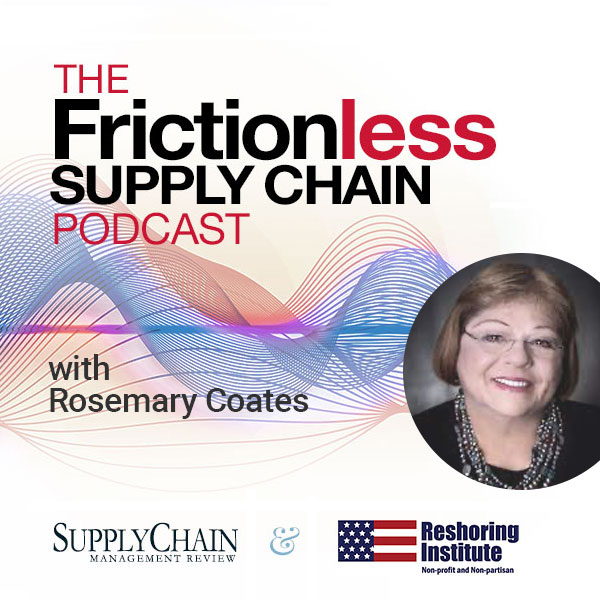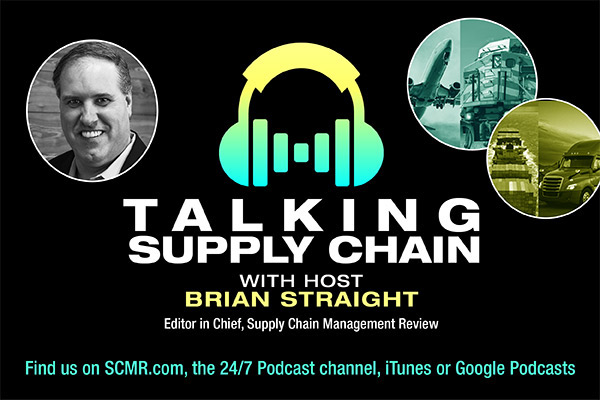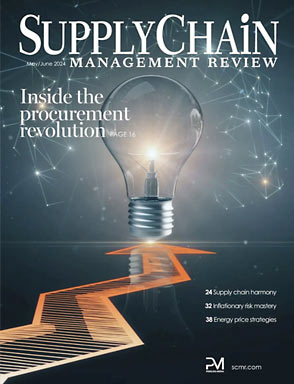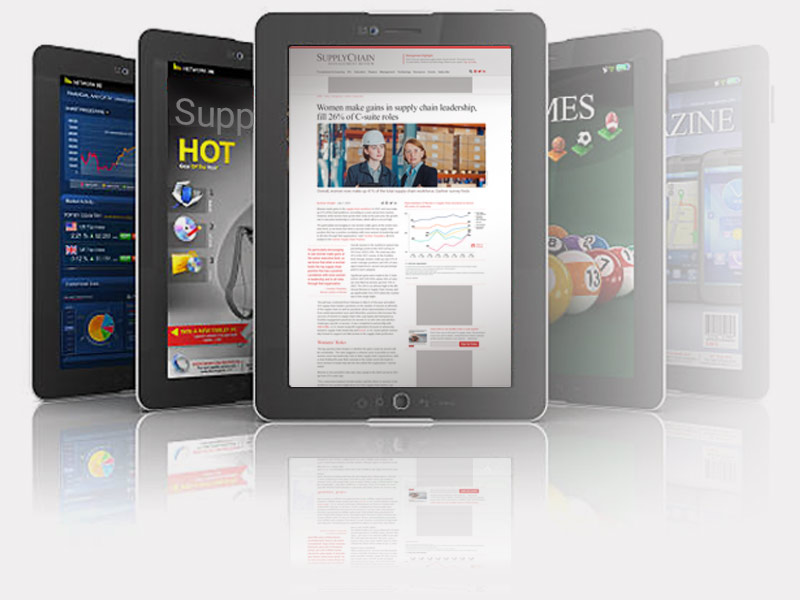Sorry, but your login has failed. Please recheck your login information and resubmit. If your subscription has expired, renew here.
September-October 2023
Best of the best. Best in class. The elite. Whatever terminology you use to describe the top performers in industry, they all have one thing in common: Companies try to emulate them. That is not easy, of course, but honors such as the annual Gartner Supply Chain Top 25 provide a roadmap for firms hoping to reach the upper echelon. As we do each year here at Supply Chain Management Review, our September/October issue dedicates significant real estate to the Gartner Supply Chain Top 25. Why do we do this? Because our mission is to help inform you, the supply chain practitioner, in all the best ways to make your own supply chains more efficient and… Browse this issue archive.Need Help? Contact customer service 847-559-7581 More options
However, in most companies the human is still in charge of supply chain planning and is ultimately held responsible if anything goes wrong. Insufficient inventory? Delayed deliveries? Promotion overlooked? Managers are unlikely to accept the justification that an AI system made the decision. Therefore, human planners need to comprehend the workings of AI, grasp why it makes certain decisions, and intervene if they believe they possess superior insights. However, if interventions become too frequent or turn out to be wrong, the benefits of new planning systems become marginal. As much as AI needs to continue to improve, human planners also need to learn to collaborate effectively with AI and develop trust in it. Understanding and confidence is crucial for an effective partnership between human and AI.
The ability to explain is vital. The AI system must articulate the rationale behind a specific decision or recommendation to ensure alignment with the planner. Creating this understanding for the human may prove challenging given that decisions are often based on thousands of variables, relationships are often non-linear, and calculations are conducted through many layers. In response, the field of Explainable AI (XAI) emerged and made significant advancements in areas with the most urgent needs. For example, in healthcare, AI assists in diagnosing diseases or recommending treatments. In finance, AI automates loan approvals. In human resources, job applications are pre-screened by AI. In each instance, users need to trust AI recommendations, necessitating clear explanations for the decisions made.
In this article we explore how explanations can guide supply chain planners in understanding, and thus accepting, AI-driven decisions. We shed light on the key methods used for creating explanations and provide practical examples to illustrate their application. Our aim is to bridge the gap between planners and AI to enable more seamless, effective AI-enhanced supply chain planning.
AI in SC planning
Many of the major supply chain planning providers have been embedding AI into their solutions. Software suites like SAP Integrated Business Planning (IBP), BlueYonder Luminate, Kinaxis RapidResponse or o9 Digital Brain use machine learning algorithms and AI to improve demand forecasting accuracy, better manage inventory, and optimize supply chain networks.

This complete article is available to subscribers only.
Log in now for full access or start your PLUS+ subscription for instant access.
SC
MR
Sorry, but your login has failed. Please recheck your login information and resubmit. If your subscription has expired, renew here.
September-October 2023
Best of the best. Best in class. The elite. Whatever terminology you use to describe the top performers in industry, they all have one thing in common: Companies try to emulate them. That is not easy, of course, but… Browse this issue archive. Access your online digital edition. Download a PDF file of the September-October 2023 issue.However, in most companies the human is still in charge of supply chain planning and is ultimately held responsible if anything goes wrong. Insufficient inventory? Delayed deliveries? Promotion overlooked? Managers are unlikely to accept the justification that an AI system made the decision. Therefore, human planners need to comprehend the workings of AI, grasp why it makes certain decisions, and intervene if they believe they possess superior insights. However, if interventions become too frequent or turn out to be wrong, the benefits of new planning systems become marginal. As much as AI needs to continue to improve, human planners also need to learn to collaborate effectively with AI and develop trust in it. Understanding and confidence is crucial for an effective partnership between human and AI.
The ability to explain is vital. The AI system must articulate the rationale behind a specific decision or recommendation to ensure alignment with the planner. Creating this understanding for the human may prove challenging given that decisions are often based on thousands of variables, relationships are often non-linear, and calculations are conducted through many layers. In response, the field of Explainable AI (XAI) emerged and made significant advancements in areas with the most urgent needs. For example, in healthcare, AI assists in diagnosing diseases or recommending treatments. In finance, AI automates loan approvals. In human resources, job applications are pre-screened by AI. In each instance, users need to trust AI recommendations, necessitating clear explanations for the decisions made.
In this article we explore how explanations can guide supply chain planners in understanding, and thus accepting, AI-driven decisions. We shed light on the key methods used for creating explanations and provide practical examples to illustrate their application. Our aim is to bridge the gap between planners and AI to enable more seamless, effective AI-enhanced supply chain planning.
AI in SC planning
Many of the major supply chain planning providers have been embedding AI into their solutions. Software suites like SAP Integrated Business Planning (IBP), BlueYonder Luminate, Kinaxis RapidResponse or o9 Digital Brain use machine learning algorithms and AI to improve demand forecasting accuracy, better manage inventory, and optimize supply chain networks.
SC
MR


More Artificial Intelligence
- Tech investments bring revenue increases, survey finds
- AI, virtual reality is bringing experiential learning into the modern age
- Humanoid robots’ place in an intralogistics smart robot strategy
- Top Performers Investing in, Benefitting from AI
- CPOs Pivot AI Focus from What’s Possible to Implementation
- Dun & Bradstreet Finds Most Supply Chains are Underprepared for Big Disruptions
- More Artificial Intelligence
Latest Podcast

 Explore
Explore
Topics
Procurement & Sourcing News
- Inflation, economic worries among top supply chain concerns for SMBs
- April Services PMI declines following 15 months of growth, reports ISM
- Despite American political environment, global geopolitical risks may be easing
- April manufacturing output slides after growing in March
- World Trade Centers offers a helping hand to create resilient, interconnected supply chains
- Bridging the ESG gap in supply chain management: From ambition to action
- More Procurement & Sourcing
Latest Procurement & Sourcing Resources

Subscribe

Supply Chain Management Review delivers the best industry content.

Editors’ Picks






